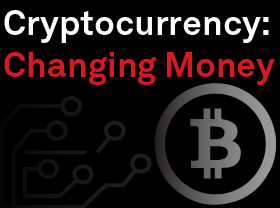S&P Global Offerings
Featured Topics
Featured Products
Events
S&P Global Offerings
Featured Topics
Featured Products
Events
S&P Global Offerings
Featured Topics
Featured Products
Events
S&P Global Offerings
Featured Topics
Featured Products
Events
Corporations
Financial Institutions
Banking & Capital Markets
Economy & Finance
Energy Transition & Sustainability
Technology & Innovation
Podcasts & Newsletters
Corporations
Financial Institutions
Banking & Capital Markets
Economy & Finance
Energy Transition & Sustainability
Technology & Innovation
Podcasts & Newsletters
Blog — 25 May, 2022

By Aries Poon
This story is part of a series analyzing the growth of cryptocurrency. Other stories in the series: Digital currencies gain traction among central banks Cryptocurrencies proliferate in LatAm as a refuge from economic instabilities Crypto mining industry's greening campaign raises new questions Crypto advocates warn of new digital divide as regulators begin inquiries Growth of cryptocurrency, stablecoins pushes regulators to ramp up scrutiny US payment platforms adapt to meet consumers' growing use of crypto |
A central bank digital currency, or CBDC, is virtual money backed or issued by a central bank. Instead of printing physical money, the central bank issues electronic tokens and accounts.
CBDCs are more cost efficient than physical cash because they have lower transaction costs, can promote financial inclusion, limit illicit activity and improve the functioning of monetary policy, according to the International Monetary Fund (IMF).
The world’s central banks have realized that they need to respond to the boom in private sector cryptocurrencies. If a large proportion of the population adopts a private foreign digital currency, for example, it could affect the central banks’ ability to carry out important monetary functions, such as acting as lender of last resort.
Many countries are actively evaluating CBDCs, and a few have issued CBDCs or done extensive pilots or tests, according to the IMF. Here's a visual guide on how they are researching and developing their versions of digital money.
CAMPAIGN
